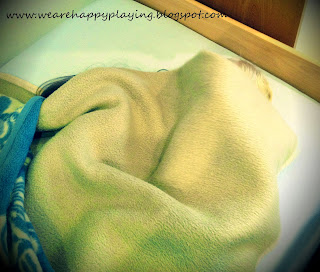In a special educational needs classroom, races also were a great way to incorporate choice making and social connections between students. Before a race, a student would be chosen by the teacher and they would then choose who they wanted to race against and what type of race they were going to compete in. The other students who were not participating in the race would sit on the side lines shouting or signing out 'ready, set, go'. To add an element of numeracy we would tally the number of races won by each child, using our counting skills to work out who had won the most races.
While I may not have a class to teach at the moment, I do have a daughter and her cousins to take care of on occasions. The last time they came around I decided we needed to have a go at some of the races I used to set up for my students.
For these races, which are not all the types of races I used to conduct, we used
- small buckets
- bean bags with a clear pocket. Find instructions on how to make some here.
Our first race was a simple running race to see who could collect the most amount of bean bags which had been scattered around the lawn. In one version of the race the children had to run and collect a bean bag and bring it back to their bucket which was at the finish line. In another version the children were allowed to take their buckets with them as they scrambled to get their bean bags.
Rolling Race
Crawling Races
For this race the children had to collect their bean bags by crawling around the lawn. Unfortunately this photos isn't the best for showing the kids crawling as they have both stopped to pick up a bean bag. Crawling is a fantastic activity to help children who may be restless as the pressure on the limbs from carrying the child's body weight can have a calming effect. It is also a form of cross crawling which gets kids right and left side of the brain working together.
Unfortunately these are the only photos I have of the races we ran that day. There were a few more sorts of races we did before the children had a snack break. Those races were...
Bunny Hop Races
Children hopped around on all fours like bunnies in order to collect their bean bags.
Seal or Commando Races
Lying on their stomachs, the children moved around by wiggling their bottoms and torsoes, using only their hands and elbows to pull them forward. The legs and feet stay together without helping. This is an awesome workout for the core muscles.
Races and Numeracy Skills
As I mentioned before, races where students are collecting something like bean bags are also a great opportunity for introducing or further developing numeracy skills. The winner of these races was not who got back to the finish line first but who collected the most bean bags. Therefore in order to know who won, every one's bean bags had to be counted and tallied.
For my niece who is older than the others and also more advanced with her numeracy skills, I increased the level of difficulty by placing 2 digit numbers in the clear pockets. Instead of counting out how many bean bags every one got, she had to add the numbers together to see who had the greatest total.
I hope that in the near future I can organise more races for these guys and do a better job of photographing them so I can show you more of my race ideas. If you are an educator, I hope this post has given you some ideas for incorporating physical activities with numeracy skills. I can assure you the children find it more appealing than sitting over counters and counting worksheets! Again if you are not familiar with the benefits of physical activities and academic achievement please have a look at my interview with Occupational Therapist Cara Sheekey who explains it very well. Here.
Until next time happy playing!



















































